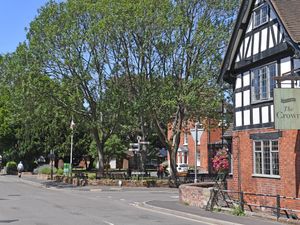St George's Day: 10 things you might not know about England's patron saint
As England marks St George's Day in lockdown, Mark Andrews explores what we know and what we don't about England's patron saint.
1. Who was St George?
Very little is known about the actual man, but he is believed to have been an officer in the Roman Army, who was executed by the Emperor Diocletian for refusing to renounce his Christianity.
2. Was he English?
The one thing we can be certain of is that he was not from England and he probably never visited the country either. It is believed he was born in Cappadocia, in what is now Turkey, to Greek parents. There is a shrine, said to contain his body, in Lod, Israel.
3. So what was all that stuff about the dragon?
The earliest story about St George rescuing a princess from a dragon dates to the 11th century. It may have started simply as a metaphor for military saints slaying dragons, symbolising the triumph of good over evil. The 13th century publication of Golden Legend, a popular collections of saints' lives, cemented the story in the public consciousness.
4. How did St George die?
Again, nobody really knows, although there are plenty of colourful stories that were circulated by early Christians. One legend claims he was slowly tortured to death over a period of seven years, having been torn on a rack, battered about the head with hammers until his brains oozed out, forced to drink poison, torn on a wheel and boiled in lead.
It is generally thought that he died on April 23, 303AD.

5. How did he become a saint?
George was canonised by Pope Gelasius in 494, although he was keen to distance the church from some of the legends about his death which he considered something of an embarrassment. He declared that George was among those saints "whose names are justly reverenced among men, but whose actions are known only to God." He feared that the stories about his martyrdom were opening the church up to ridicule, and ordered that they must not be read out in church.
6. So how did someone who never visited England end up as its patron saint?
Richard the Lionheart is ultimately the reason why St George ‘became’ English, having brought his insignia back to England after fighting the Crusades. This led to King Edward acquiring an affinity for St George, and his troops wore the cross of St George while fighting the Welsh. Edward raised the flag over Caerlaverock Castle in Scotland in 1300 following his victory in a siege.
George was officially declared Patron Saint of England in 1350 by Edward I's grandson King Edward III, when he formed the Order of the Garter of St George. George's following was further advanced by King Henry V, at the battle of Agincourt in northern France.
7. Was he the first Patron Saint of England?
No. Prior to his elevation by King Edward III, St Edmund King & Martyr was generally considered to be the Patron Saint of England. In 2006, a group that included BBC Radio Suffolk and the East Anglian Daily Times failed in their campaign to reinstate Edmund. The campaign was revived again in East Anglia again in 2013, with the backing of local businesses, churches, radio and politicians.
King Edward the Confessor was another contender to be the country's patron saint.

8. Is St George exclusively associated with England?
No. England shares St George with Venice, Genoa, Portugal, Ethiopia and Catalonia among others as their patron saint and many of these places have their own celebrations and ceremonies in his honour.
9. When did we start marking St George's Day?
People in England began marking the feast of St George on the anniversary of his death during the ninth century. But under the rule of King Henry V, St George's Day became one of the most important feast days in the English calendar.
At this time, a legend arose that St George had actually appeared to the English during their stunning victory over the French at Agincourt in 1415, and St George's Day was elevated to a "double major feast" in the declarations of the Province of Canterbury in 1415 and the Province of York in 1421. This put St George's Day on a par with Christmas Day, and meant that work was prohibited and church attendance was mandatory.
St George's Day began to wane in popularity following the Union of England and Scotland in 1707 to form Great Britain.
10. St George's Day isn't always April 23
Church of England rules denote that no saints' day should be celebrated between Palm Sunday and the Sunday after Easter Day. When April 23 falls into that period, the celebrations are moved to the first Monday after.





